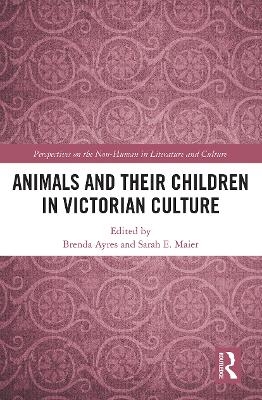
Animals and Their Children in Victorian Culture
Routledge (Verlag)
978-1-032-23959-0 (ISBN)
Whether a secularized morality, biblical worldview, or unstated set of mores, the Victorian period can and always will be distinguished from those before and after for its pervasive sense of the "proper way" of thinking, speaking, doing, and acting. Animals in literature taught Victorian children how to be behave. If you are a postmodern posthumanist, you might argue, "But the animals in literature did not write their own accounts." Animal characters may be the creations of writers’ imagination, but animals did and do exist in their own right, as did and do humans. The original essays in Animals and Their Children in Victorian explore the representation of animals in children’s literature by resisting an anthropomorphized perception of them. Instead of focusing on the domestication of animals, this book analyzes how animals in literature "civilize" children, teaching them how to get along with fellow creatures—both human and nonhuman.
Dr. Brenda Ayres, once Full Professor on the graduate faculty of English, is now teaching online as Adjunct Professor for Liberty University and Southern New Hampshire University. Dr. Sarah E. Maier is Full Professor of English and Comparative Literature, as well as Director of Interdisciplinary Graduate Studies, at the University of New Brunswick.
Introduction: Little Beasts on Tight Leashes
Brenda Ayres and Sarah E. Maier
Chapter 1
Why Did the Cow Jump over the Moon? Animals (but Mostly Pussies) in Nursery Rhymes
Brenda Ayres
Chapter 2
Wanted Dead or Alive: Rabbits in Victorian Children’s Literature
Keridiana Chez
Chapter 3
"In friendly chat with bird or beast … mixing together things grave and gay": Desireful Animals and Humans in Alice’s Adventures in Wonderland and Through the Looking Glass
Anna Koustinoudi
Chapter 4
A Brotherhood of Wolves: Loyalty in Yiddish and Anglo-Jewish Folktales
Lindsay Katzir and Brandon Katzir
Chapter 5
Advocating for the Least of These: Empowering Children and Animals in The Band of Mercy Advocate
Alisa Clapp-Itnyre
Chapter 6
Bush Animals, Developmental Time, and Colonial Identity in Victorian Australian Children’s Fiction
Christie Harner
Chapter 7
The Serpent; or, the Real King of the Jungle
Stephen Basdeo
Chapter 8
Learning Masculinity: Education, Boyhood, and the Animal in Thomas Hughes’ Tom Brown’s School Days
Alicia Alves
Chapter 9
Unruly Females on the Farm: Farmed Animal Mothers and the Dismantling of the Species Hierarchy in 19th Century Literature for Children
Stacy Hoult-Saros
Chapter 10
The Child is Father of the Man: Lessons Animals Teach Children in George Eliot’s Writings
Constance Fulmer
Chapter 11
Neither Brutes nor Beasts: Animals, Children and Young Persons and/in the Brontës
Sarah E. Maier
Chapter 12
Animals, Children, and the Fantasies of the Circus
Susan Nance
Chapter 13
Imperial Pets: Monkey-Girls, Man-Cubs, and Dog-Faced Boys on Exhibition in Victorian Britain
Shannon Scott
| Erscheinungsdatum | 14.12.2021 |
|---|---|
| Reihe/Serie | Perspectives on the Non-Human in Literature and Culture |
| Zusatzinfo | 5 Illustrations, black and white |
| Verlagsort | London |
| Sprache | englisch |
| Maße | 152 x 229 mm |
| Gewicht | 381 g |
| Themenwelt | Geisteswissenschaften ► Sprach- / Literaturwissenschaft ► Anglistik / Amerikanistik |
| Geisteswissenschaften ► Sprach- / Literaturwissenschaft ► Literaturgeschichte | |
| Geisteswissenschaften ► Sprach- / Literaturwissenschaft ► Literaturwissenschaft | |
| Naturwissenschaften ► Biologie ► Zoologie | |
| Weitere Fachgebiete ► Land- / Forstwirtschaft / Fischerei | |
| ISBN-10 | 1-032-23959-X / 103223959X |
| ISBN-13 | 978-1-032-23959-0 / 9781032239590 |
| Zustand | Neuware |
| Haben Sie eine Frage zum Produkt? |
aus dem Bereich


